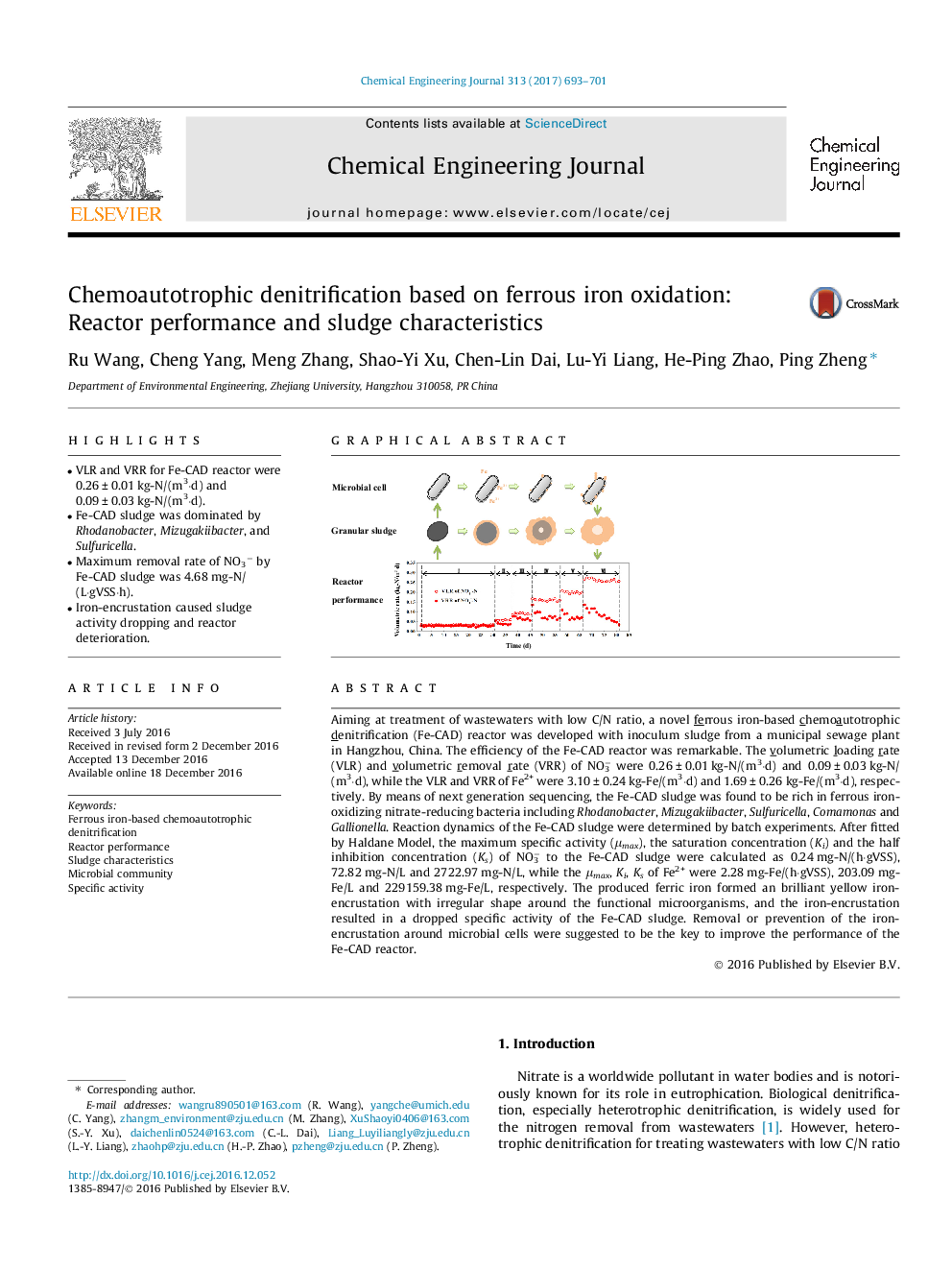| Article ID | Journal | Published Year | Pages | File Type |
|---|---|---|---|---|
| 6466604 | Chemical Engineering Journal | 2017 | 9 Pages |
â¢VLR and VRR for Fe-CAD reactor were 0.26 ± 0.01 kg-N/(m3·d) and 0.09 ± 0.03 kg-N/(m3·d).â¢Fe-CAD sludge was dominated by Rhodanobacter, Mizugakiibacter, and Sulfuricella.â¢Maximum removal rate of NO3â by Fe-CAD sludge was 4.68 mg-N/(L·gVSS·h).â¢Iron-encrustation caused sludge activity dropping and reactor deterioration.
Aiming at treatment of wastewaters with low C/N ratio, a novel ferrous iron-based chemoautotrophic denitrification (Fe-CAD) reactor was developed with inoculum sludge from a municipal sewage plant in Hangzhou, China. The efficiency of the Fe-CAD reactor was remarkable. The volumetric loading rate (VLR) and volumetric removal rate (VRR) of NO3â were 0.26 ± 0.01 kg-N/(m3·d) and 0.09 ± 0.03 kg-N/(m3·d), while the VLR and VRR of Fe2+ were 3.10 ± 0.24 kg-Fe/(m3·d) and 1.69 ± 0.26 kg-Fe/(m3·d), respectively. By means of next generation sequencing, the Fe-CAD sludge was found to be rich in ferrous iron-oxidizing nitrate-reducing bacteria including Rhodanobacter, Mizugakiibacter, Sulfuricella, Comamonas and Gallionella. Reaction dynamics of the Fe-CAD sludge were determined by batch experiments. After fitted by Haldane Model, the maximum specific activity (μmax), the saturation concentration (Ki) and the half inhibition concentration (Ks) of NO3â to the Fe-CAD sludge were calculated as 0.24 mg-N/(h·gVSS), 72.82 mg-N/L and 2722.97 mg-N/L, while the μmax, Ki, Ks of Fe2+ were 2.28 mg-Fe/(h·gVSS), 203.09 mg-Fe/L and 229159.38 mg-Fe/L, respectively. The produced ferric iron formed an brilliant yellow iron-encrustation with irregular shape around the functional microorganisms, and the iron-encrustation resulted in a dropped specific activity of the Fe-CAD sludge. Removal or prevention of the iron-encrustation around microbial cells were suggested to be the key to improve the performance of the Fe-CAD reactor.
Graphical abstractDownload high-res image (75KB)Download full-size image
